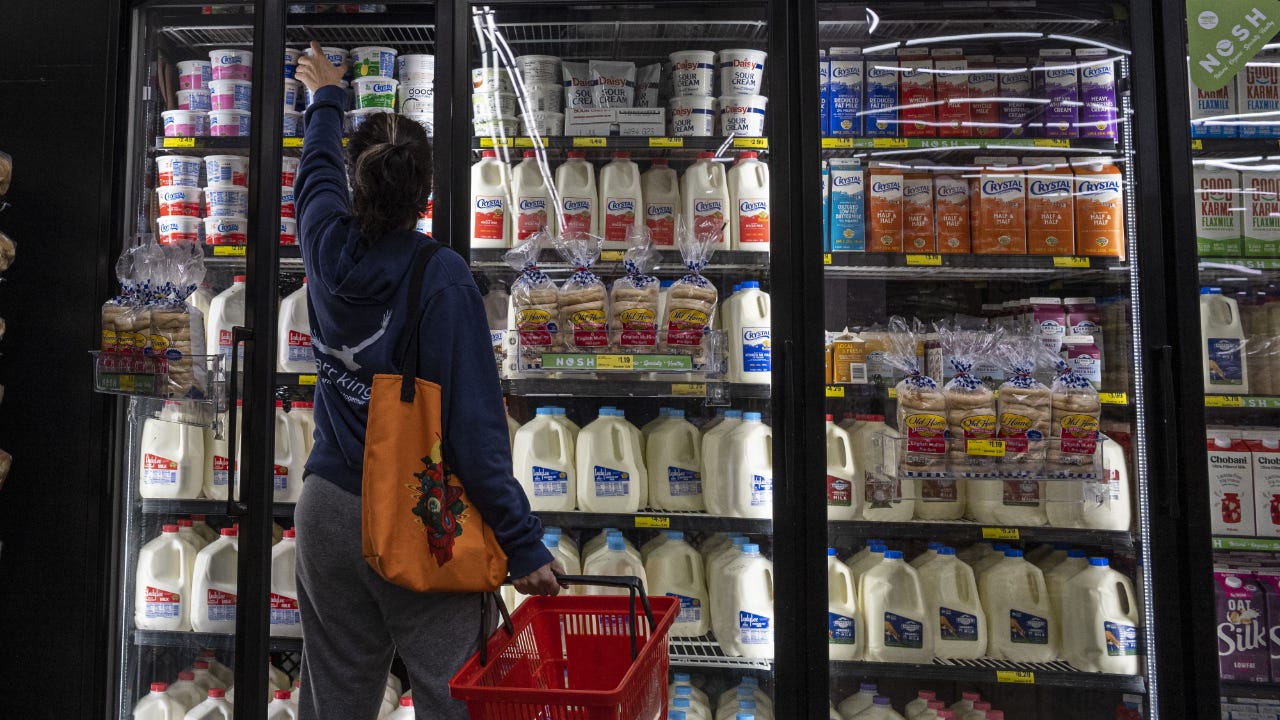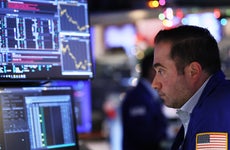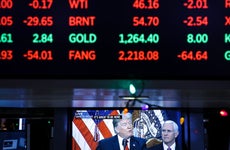Survey: Just 18% of Americans plan to boost stock investments in 2022 as inflation and volatility rise

The Bankrate promise
At Bankrate we strive to help you make smarter financial decisions. While we adhere to strict , this post may contain references to products from our partners. Here's an explanation for .
It’s been one of the rockiest starts ever for the stock market in 2022, and economic turbulence has Americans reacting in numerous ways, according to a Bankrate survey. Less than 1 in 5 (18 percent) U.S. adults with retirement or investment accounts say they will invest more in 2022 than they did in 2021. And many investors say they’re purposely not taking any action.
A total of 56 percent of U.S. investors said they had purposely not made any moves in response to the market’s volatility. Similarly, about 62 percent of respondents said they had intentionally not made any moves to their investments because of high inflation.
But younger investors are much more likely to say they’ll increase their investments this year, compared to last year. More than 43 percent of Generation Z (ages 18-25) say they’ll add “much more” or “somewhat more” to their investments in 2022. Meanwhile, only about 8 percent of baby boomers (ages 58-76) say they’ll be adding more to their investment accounts in 2022.
“Gen Z and millennial investors willing to invest more in stocks this year, despite market volatility and inflation, can see greater long-term reward for the discipline of hanging on and buying more at lower price points,” says Greg McBride, CFA, Bankrate chief financial analyst.
Bankrate surveyed 3,658 U.S. adults about their investments, revealing these top findings.
Key takeaways:
- Fifty-six percent of U.S. investors have intentionally made no moves in response to higher stock market volatility or inflation.
- At about 18 percent, the number of investors planning to “invest more” in 2022 and those planning to “invest less” is evenly split.
- Younger investors are more likely to say they’ll add more money to their investment accounts in 2022.
- Men (40 percent) were more likely to be actively investing than women (31 percent).
- Highly educated investors were likely to intentionally make no moves in response to the economic climate.
- Lower-income investors were more likely to move their money in response to the souring economic climate and falling markets.
Most U.S. investors have intentionally made no moves in response to higher stock market volatility or inflation
Both inflation and volatility have been at extremes in 2022, but many consumers are saying they’re intentionally not touching their investments in response to those concerns.
In response to market volatility:
- More than half (56 percent) of stock investors said they purposely have not taken any action so far in 2022.
- About 14 percent said they had purchased more stock this year.
- Nearly 16 percent said that they had sold stock investments or withheld further contributions from them in 2022.
- Almost 15 percent of respondents said they were unaware of the heightened volatility in the stock market.
With inflation near multidecade highs – a blistering 8.3 percent in the April 2022 report – many Americans have decided to simply stay the course with their investments.
In response to high inflation:
- A strong majority (nearly 62 percent) of stock investors said they intentionally made no changes to their portfolio.
- More than 13 percent said that they had contributed more to their stock-related investments.
- About 14 percent said that they had moved money out of stock-related investments or had refrained from buying more.
- Almost 11 percent said they weren’t aware of higher inflation.
At 18 percent, the number of investors planning to invest more and those planning to invest less is evenly divided
And how much are Americans planning to invest over the course of 2022 compared to 2021?
Though most Americans are investing the same, it’s actually neck and neck between those saying they’ll invest more this year (18 percent) and those saying they’ll invest less (18 percent).
To break it down, about 5 percent said they would invest “much more” in 2022, while about 13 percent said they would invest “somewhat more” this year.
Of those investing less, more than 9 percent said they would be adding “somewhat less” to their accounts in 2022, while more than 8 percent said they would contribute “much less” than in 2021. (These figures round to nearly 18 percent in total.)
Just more than half (52 percent) said they would invest the same amount of money in 2022 as they did last year, while 13 percent said they didn’t know how much they would invest.
Younger investors are more likely to make active moves to their investment accounts in 2022
Age played a role in whether Americans said they were actively investing in their stock accounts this year. Younger investors said they were more apt to make moves in response to inflation or volatility, while older investors tended to make fewer moves.
- About 73 percent of Gen Z respondents (ages 18-25) said they had actively bought, sold or withheld additional investment due to market volatility or high inflation in 2022.
- More than 46 percent of millennials (ages 26-41) said they had actively adjusted their portfolios.
- Just 28 percent of Generation X (ages 42-57) said they had been actively investing their accounts.
- More than 25 percent of baby boomers (ages 58-76) said they had bought, sold or withheld money from investments this year.
On the other side, older investors were apt to purposely do nothing in response to inflation and volatility.
- Almost 64 percent of baby boomers said they intentionally made no investing moves in response to inflation and volatility.
- About 56 percent of Gen X said they made no moves.
- Exactly 36 percent of millennials said they had made no changes to their investments.
- Just 14 percent of Gen Z said they had purposely not made any changes to their investments in response to inflation and volatility.
But when asked what they will do over the course of 2022 (and not just what they have already done), younger investors are far more likely to say they will put more in stocks this year, rather than less, compared to last year.
- More than 43 percent of Gen Z say that they will invest more in 2022 than in 2021, compared to about 18 percent who say they will invest less this year.
- More than 27 percent of millennials say they’ll invest more this year, while about 14 percent who say they will invest less.
- About 14 percent of Gen X say they will invest more in 2022, compared to about 16 percent who say they will invest less.
- Meanwhile, about 8 percent of baby boomers say they’ll invest more this year, while about 22 percent say they’ll invest less in stocks.
“Boomers are nearly three times as likely to invest less in stocks this year, rather than more, as compared to last year, but this is entirely consistent with dialing back portfolio risk as retirement looms, begins, or continues, regardless of the overall market environment,” McBride says.
Men were more likely to be actively investing than women
The likelihood that an investor made active investing moves also seemed related to gender, according to the Bankrate survey.
Nearly 40 percent of men said that they were active investors — either moving money into, out of, or purposely withholding additional contributions to stocks — in response to increased market volatility or higher inflation. In comparison, about 31 percent of women said the same.
Men were also more likely to say (21 percent) that they planned to invest more in stocks this year than women were to say the same (14 percent). Women were more likely to say (16 percent) that they didn’t know whether they would invest more than men were (10 percent).
Highly educated investors were likely to intentionally make no moves in response to the souring economic climate
Investors with higher levels of education were more likely to stand pat on their investments than those with less education. More than 62 percent of those with post-graduate education and 54 percent of those with a four-year degree said that they had purposely taken no action in response to inflation or market volatility. That compares to more than 46 percent of those with some college and 41 percent of high-school graduates and those without a high-school diploma.
Those with higher levels of education weren’t as likely to sell or withhold contributions than those with less education. About 15 percent of those with post-graduate education and 16 percent of those with four-year degrees said they had sold or withheld contributions from investing accounts in response to volatility or inflation. That compares to 23 percent of those with some college and 27 percent of those with a high-school diploma or less.
More education was also correlated with how much investors said they will invest in stocks this year compared to last year. More than 62 percent of post-graduates and almost 56 percent of those with four-year degrees said that they will invest the same amount in stocks this year as last year. In comparison, about 48 percent of those with some college and 44 percent of those with a high-school diploma or less said they will invest the same amount as last year.
Lower-income investors were more likely to move their money in response to the economic climate
Americans with the lowest incomes were more likely than higher earners to move money out of stocks or withhold additional investment due to the market’s volatility.
- More than 23 percent of households with income less than $50,000 a year said they did so.
- Nearly 14 percent of households with income between $50,000 and $79,999 did so.
- Around 17 percent of households with income between $80,000 and $99,999 did so.
- Almost 15 percent of households with income more than $100,000 said they had moved money out of stocks or withheld additional investment due to the market’s volatility.
Americans in the lowest-income group were also the most likely to be active investors due to inflation, either buying, selling or withholding additional investment due to that factor.
- Almost 40 percent of households with income less than $50,000 per year said they had made these moves in 2022 in response to inflation.
- Nearly 23 percent of households with income between $50,000 and $79,999 did so.
- Around 28 percent of households with income between $80,000 and $99,999 did so.
- Almost 27 percent of households with income above $100,000 did so.
Methodology
This study was conducted for Bankrate via phone interview by YouGov. Interviews were conducted from April 19-22, 2022, among a sample of 3,658 U.S. adults. Data are weighted and are intended to be representative of all U.S. adults, and therefore are subject to statistical errors typically associated with sample-based information.
Related Articles

Survey: Nearly two-thirds of Americans don’t expect their personal finances to improve in 2024

Survey: Pros expect modest rally in stocks over the next year despite growing recession fears

Investors optimistic about 2019 despite uncertainty about Trump administration

Millennials slow to start investing in stock market, Bankrate survey finds